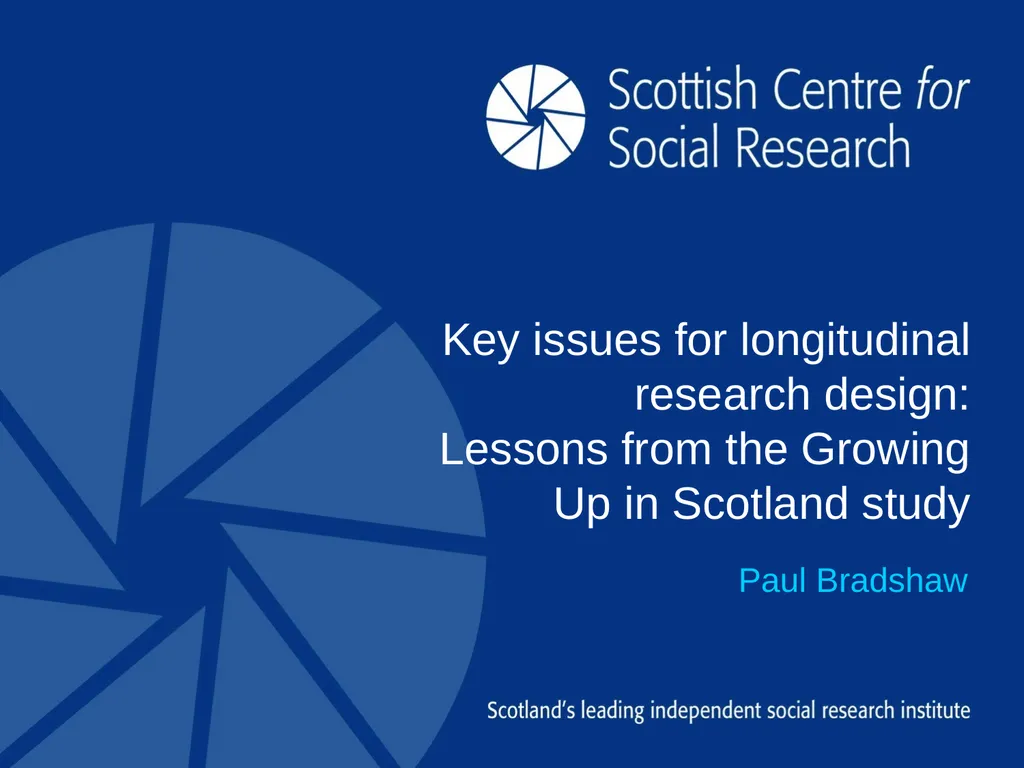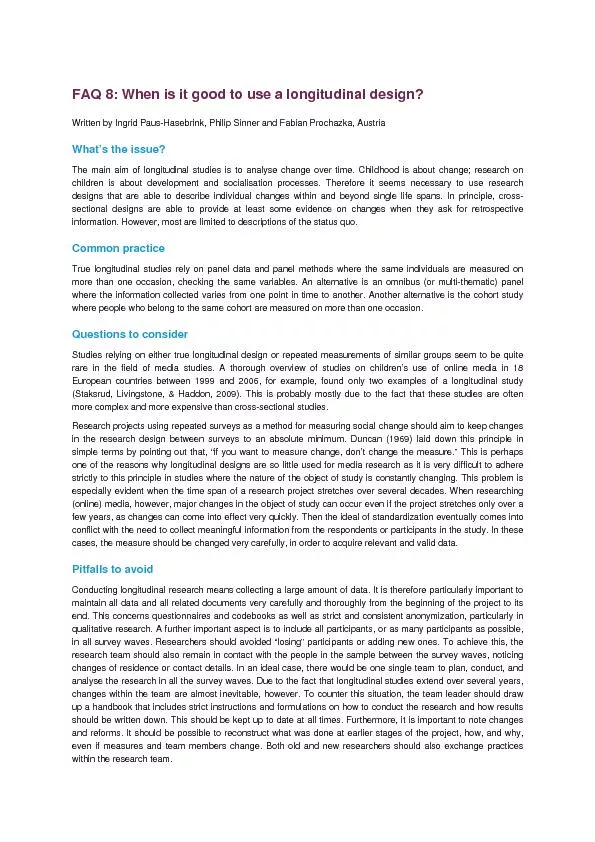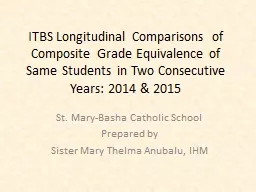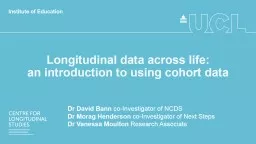Key issues for longitudinal research design:
Author : pamella-moone | Published Date : 2025-06-27
Description: Key issues for longitudinal research design Lessons from the Growing Up in Scotland study Paul Bradshaw Definitions of longitudinal research In the broadest sense longitudinal research involves the follow up of any set of entities in which
Presentation Embed Code
Download Presentation
Download
Presentation The PPT/PDF document
"Key issues for longitudinal research design:" is the property of its rightful owner.
Permission is granted to download and print the materials on this website for personal, non-commercial use only,
and to display it on your personal computer provided you do not modify the materials and that you retain all
copyright notices contained in the materials. By downloading content from our website, you accept the terms of
this agreement.
Transcript:Key issues for longitudinal research design::
Key issues for longitudinal research design: Lessons from the Growing Up in Scotland study Paul Bradshaw Definitions of longitudinal research In the broadest sense longitudinal research involves the follow up of any set of entities in which changes can be observed over time. Individuals Households Institutions such as hospitals or schools Nations Most commonly focussed on individuals No recognised definition of what period or what number of follow-ups constitutes ‘longitudinal’ Aim is usually to determine causes and processes which lead to change and/or to particular outcomes The UK experience The UK has a long, and highly regarded, history of (particularly quantitative) longitudinal social enquiry A number of ongoing internationally renowned longitudinal studies providing information on the life histories of people as they move from birth to old age Current QNLR being undertaken in Britain includes: Birth cohort studies Age cohort studies Family/Household panel studies Area studies Census-based studies The challenges of longitudinal research “The success of a longitudinal study depends on stable leadership from a committed principal investigator and a team of highly skilled researchers” (Bynner et al, 2006) Sample Data collection Duration (& relevance) Ethics Cost Data analysis The Sample Two main issues: Sample design Non-response and attrition Sample design considerations What is the population of interest? All vulnerable children? Sub-groups of interest? E.g. with particular characteristics – age, family circumstances, area where they live, interventions received What do you want to be able to say about them? Use sample to generalise to population? Compare outcomes and experiences between children in different groups? How will you find/recruit them? Is there a sampling frame with the info you need? Will you need the help of an agency/organisation to recruit? Sampling precision (1) When using a sample, the data produces ‘estimates’ of what the real value may be in the population. The precision of these estimates is affected by: Sample size Sample clustering Measuring sample precision: Use ‘confidence intervals’ and ‘standard errors’ Confidence interval (CI) Typically 95% meaning 95 times out of 100 this interval will capture the true population value that we are trying to estimate Expressed as e.g. 64% (+/- 6%) suggesting the true value is somewhere between 58% and 70% Differences will usually have to be of the magnitude of the CI for it to be statistically significant – e.g. in example above, an increase or decrease of around 6% would be necessary. Smaller sample sizes produce larger














